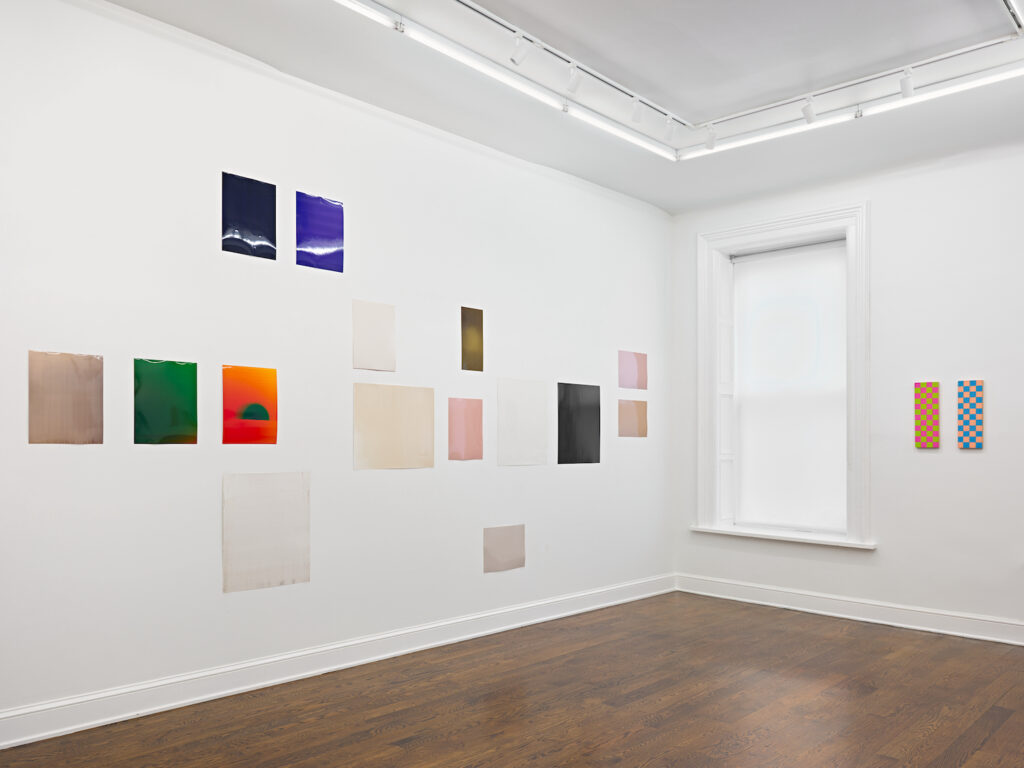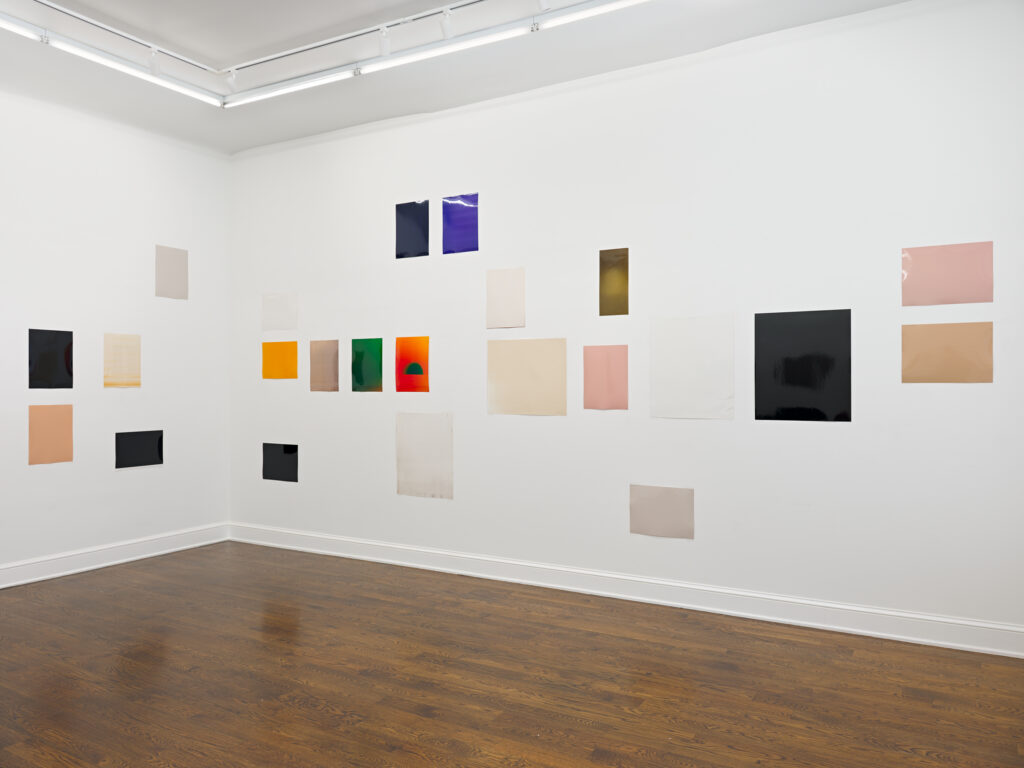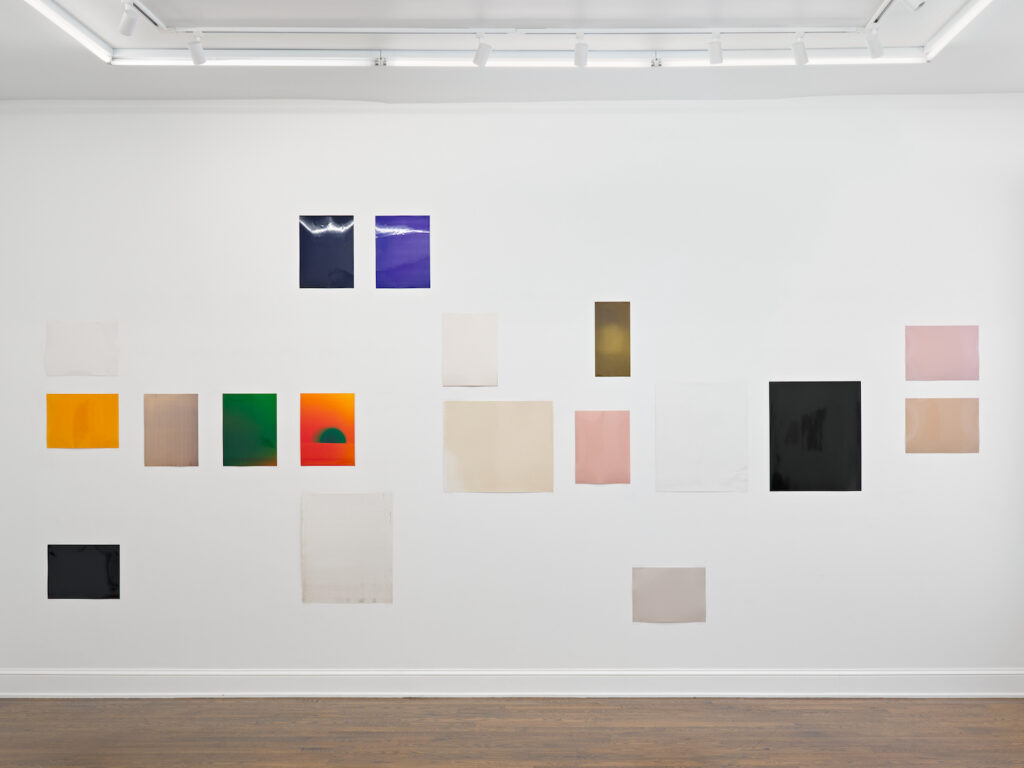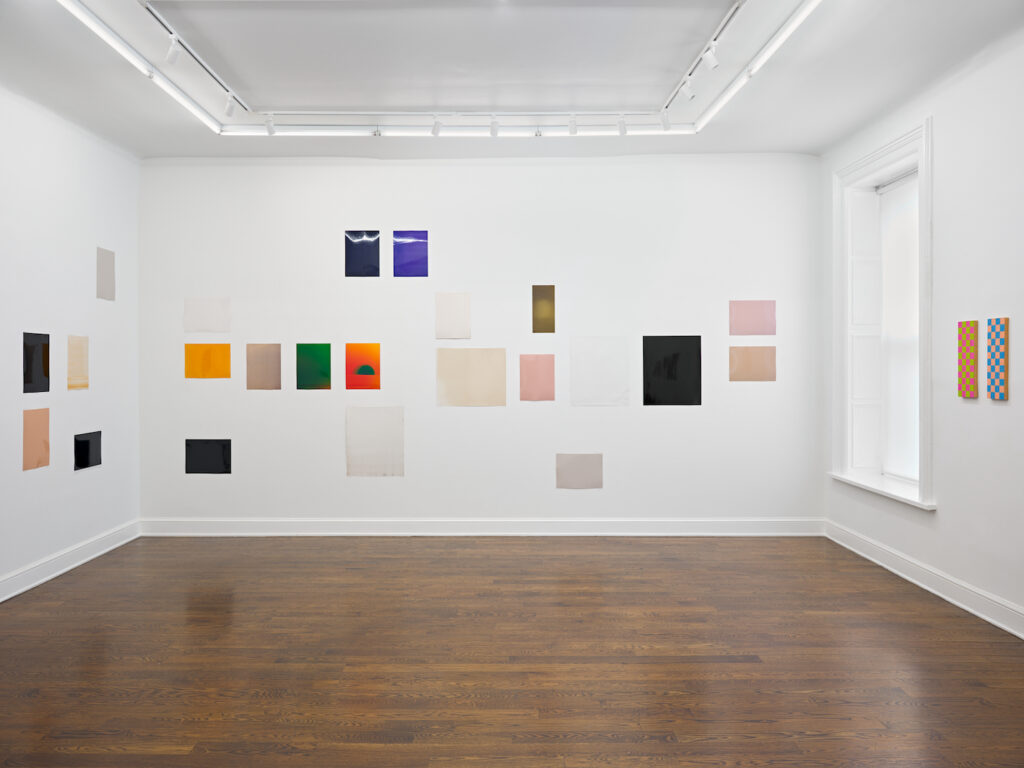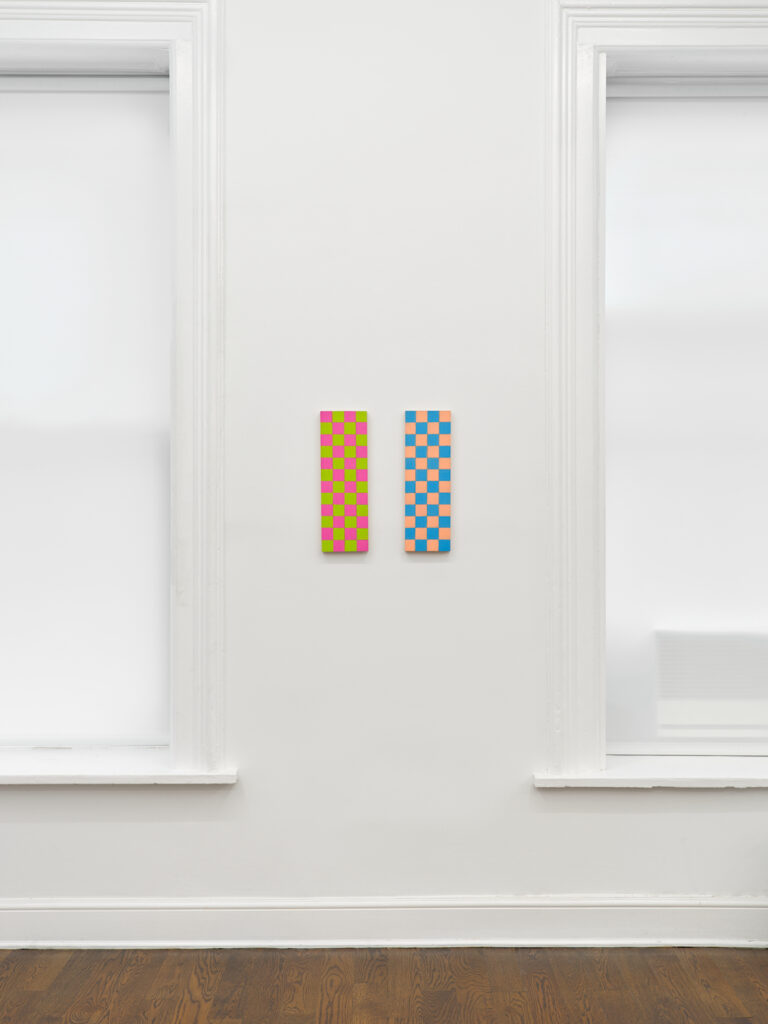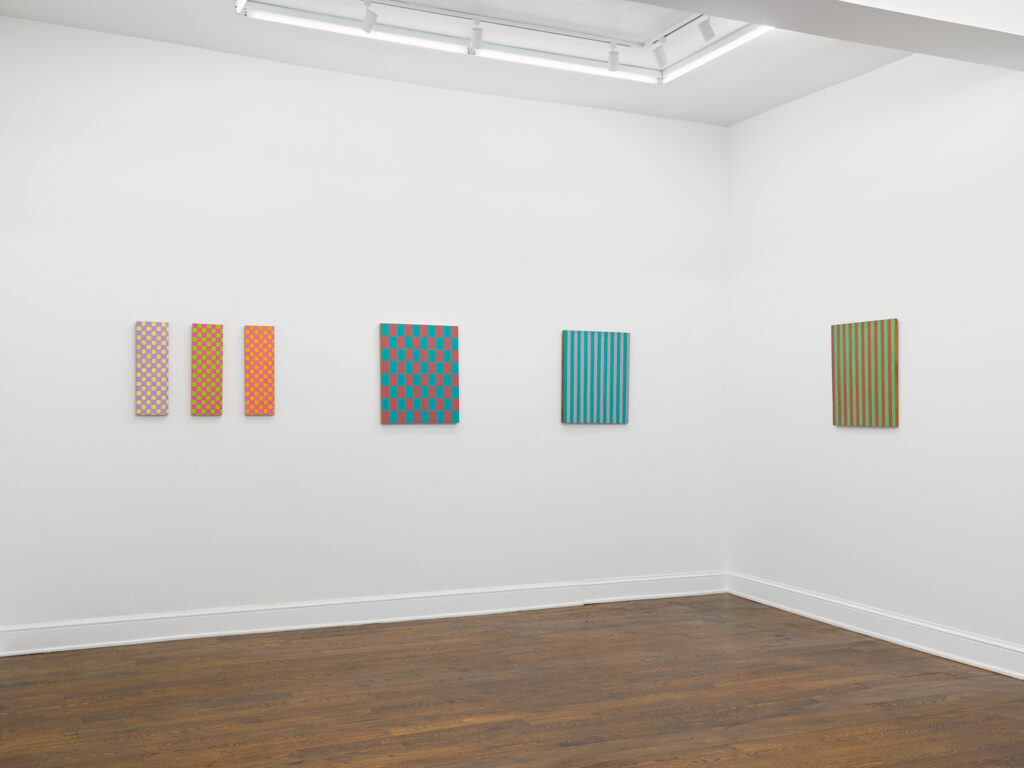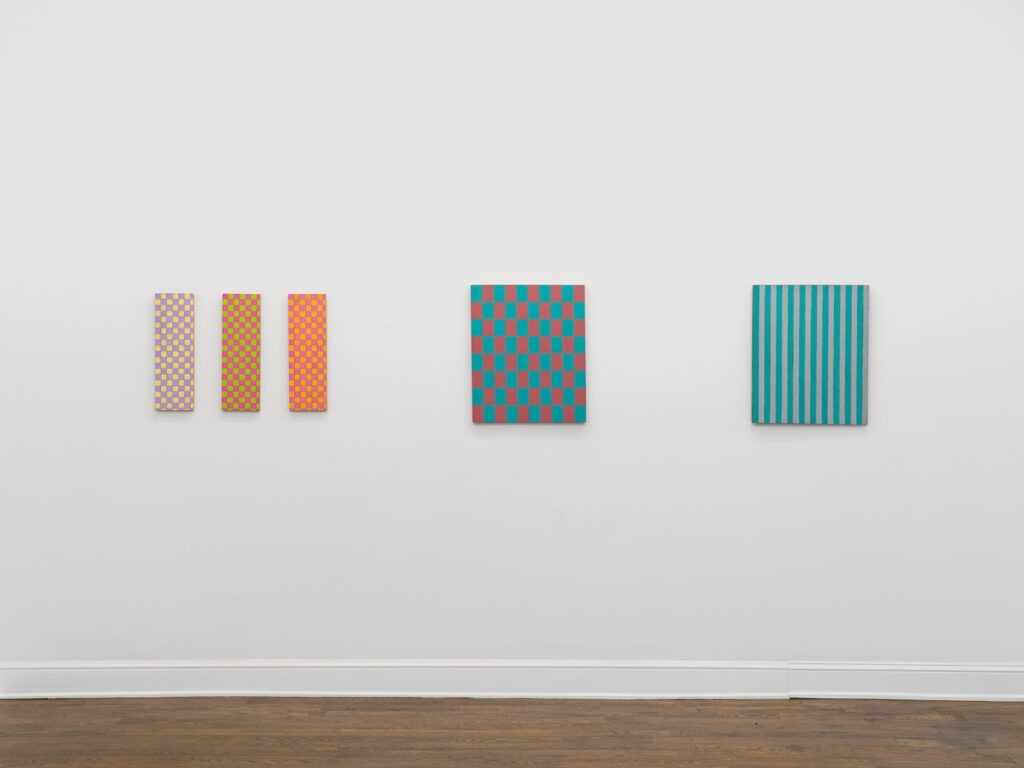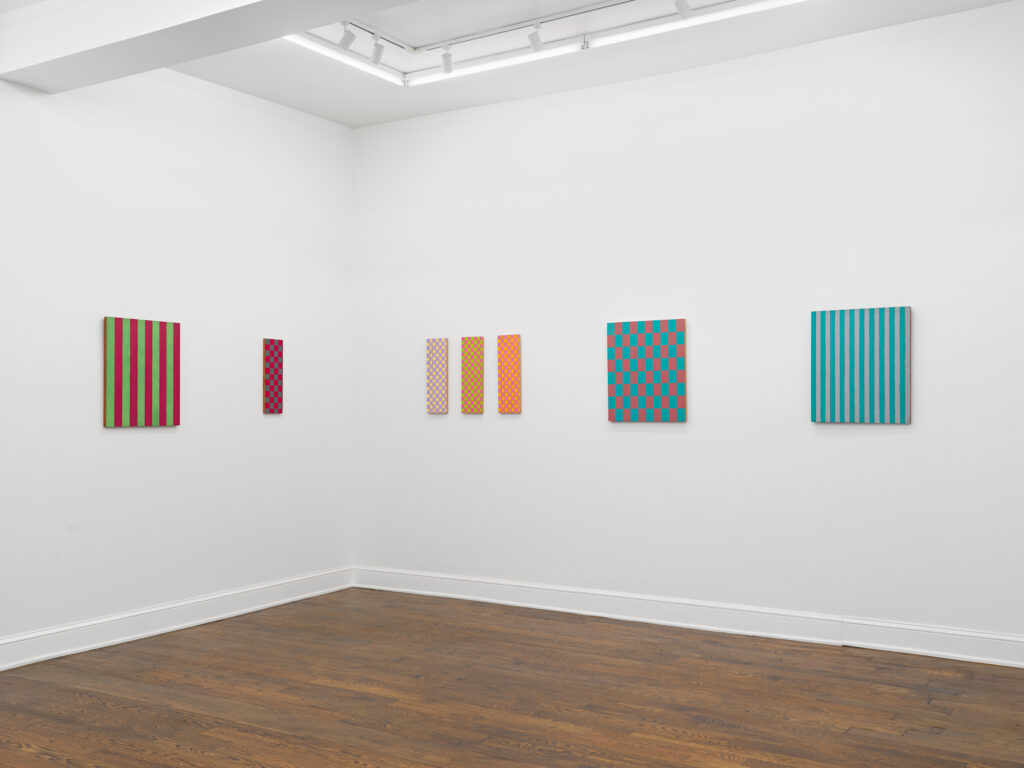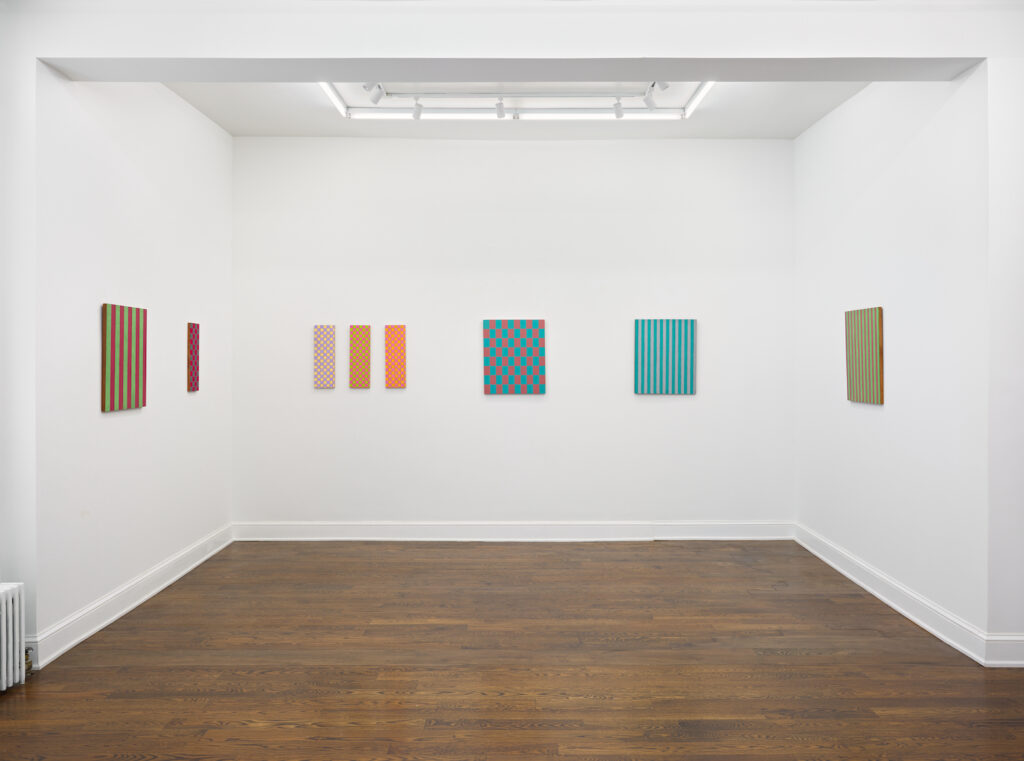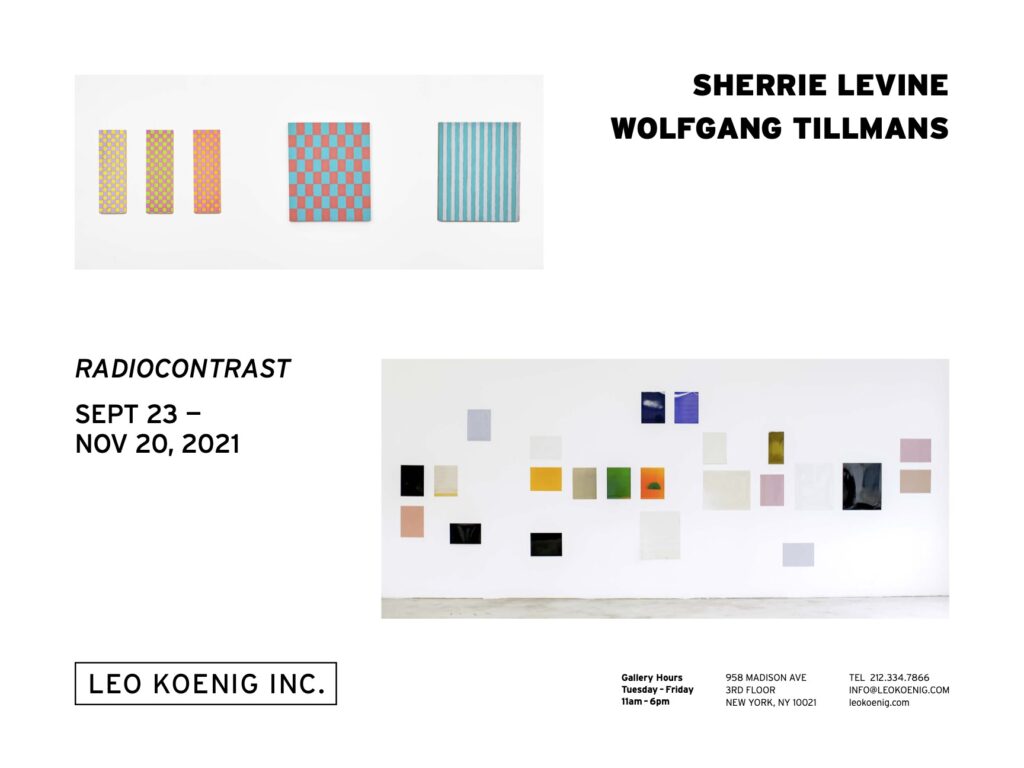Press Release
When trying to visualize beneath an occluded surface, radiocontrast is sometimes employed to make the hidden appear more visible. Applied before a scan, color appears as an agent, due to the chemical reaction of injected dyes, that illuminates and reveals details,minutia that otherwise would be forever obscured. Radiocontrast assists in looking within or below the surface to see internal workings and to highlighting anomalies.
Wolfgang Tillmans’ “Silver V” is part of a series of works that the artist started in 1992. The series has evolved into a body of over 200 pieces, or “events” as the art historian Tom Holert has referred to them. The photos themselves are created sans camera and are the result of the interaction between film processing mechanics and the silver nitrate coated paper. Several substances were used to interact with the paper, including chemicals, salts, algae and light. Exposing the intricacies of the medium itself, accidents and mishaps are often how the variation of color is achieved. The light that penetrates cracks in the paper feeder produce streaks of color, while paper exposed to different hues of light creates the pulsating wave. For Tillmans, each “Silver V” work represents the “result of a making” and is an amalgam of human or non-human interventions and processes, both expected and unexpected. Through his integration of genres, subjects, technique and exhibition strategies, Tillmans has expanded conventional ways of positioning photography and questioning existing values and hierarchies, challenging what it means to create pictures in an increasingly image-saturated world.
In Sherrie Levine’s check and stripe paintings, the occluded surface that is brought into stark visibility is the hierarchy and patriarchal history of the art world, and culture itself. Throughout her career, Levine has repeatedly laid bare the concepts of originality and authenticity in the making of art. On the surface, her check paintings vaguely recall works by artists like Kazimir Malevich and Piet Mondrian, and further inspired by “generic” type of painting involving repetition and seriality. In Levine’s paintings, however, the lines are not precise, the colors are softer. At times, her pastels are literally “milky” by her use of the material casein, perhaps another subtle jab at gender complacency. Through all these strategies and techniques, the artist challenges the viewer to closely re-examine its precedents to determine the realities of what is below the surface. According to Levine, “A painting’s meaning lies not in it’s origin, but in its destination. The birth of the viewer bust be at the cost of the painter.”
Artist’s Biographical Information:
Born in 1968 in Remscheid, Germany, Wolfgang Tillmans studied at Bournemouth and Poole College of Art and Design in Bournemouth, England, from 1990 to 1992. In 2000, Tillmans was the first photographer and first non-British artist to receive the Turner Prize, an award given annually by Tate in London. The artist received the Kulturpreis der Deutschen Gesellschaft für Photographie, serving as an Artist Trustee on the Board of Tate. He has been a member of the Akademie der Künste, Berlin, since 2012 and was appointed a member of the Royal Academy of Arts, London, in 2013.
Since the early 1990s, Tillmans’s work has been the subject of prominent solo exhibitions at international institutions including Tate Britain (2003); P.S.1 Contemporary Art Center, Long Island City (2006); Museum of Contemporary Art Chicago (2006), traveling to Hammer Museum, Los Angeles (2006-2007), Hirshhorn Museum and Sculpture Garden, Washington, DC (2007), and Museo Tamayo, Mexico City (2008); Serpentine Gallery, London (2012), which traveled to venues in South America including Museu de Arte Moderna de São Paulo (MAM), Museo de Arte del Banco de la República, Bogotá, Colombia, Museo de Arte de Lima (MALI), Peru, and Museo de Artes Visuales (MAVI), Santiago de Chile; Kunsthalle Zürich (2012), Traveling to Les Rencontres d’Arles in France (2013); Moderna Museet, Stockholm (2013); and The National Museum of Art, Osaka (2015). Also in 2015, Book for Architects, a two-channel video installation, was on view at The Metropolitan Museum of Art, New York. In 2016, a solo show of the artist’s work was hosted by Museu Serralves, Porto.
Born in 1947 in Hazleton, Pennsylvania, Sherrie Levine studied at the University of Wisconsin, Madison, where she received her M.F.A. in 1973. In 2011, the Whitney Museum of American Art in New York presented MAYHEM, a major exhibition of Levine’s work spanning three decades. The show included one of her most acclaimed series from 1981—a group of twenty-two photographs of reproductions of Walker Evans’s photographs from his Farm Security Administration-commissioned project to document the rural South during the Great Depression of the 1930s.
Levine’s work has been the subject of solo exhibitions at prominent institutions worldwide, including at Neues Museum, State Museum for Art and Design in Nuremberg (2016); Portland Art Museum, Oregon (2013); Museum Haus Lange, Krefeld, Germany (2010); San Francisco Museum of Modern Art (2009 and 1991); and the Georgia O’Keeffe Museum, Santa Fe, New Mexico (2007). Other venues include Museum Morsbroich, Leverkusen, Germany (1998); Museum of Contemporary Art, Los Angeles; The Menil Collection, Houston (both 1995); Portikus, Frankfurt (1994); Philadelphia Museum of Art (1993); Kunsthalle Zürich (1991); High Museum of Art, Atlanta; Hirshhorn Museum and Sculpture Garden, Washington, DC (both 1988); and the Wadsworth Atheneum Museum of Art, Hartford, Connecticut (1987).
The Gallery is open to welcome visitors Tuesday through Friday 11-6pm. Please observe the COVID-19 protocols for visiting public spaces in NYC. For further information and/or images,
Please contact the gallery at info@leokoenig.com.
